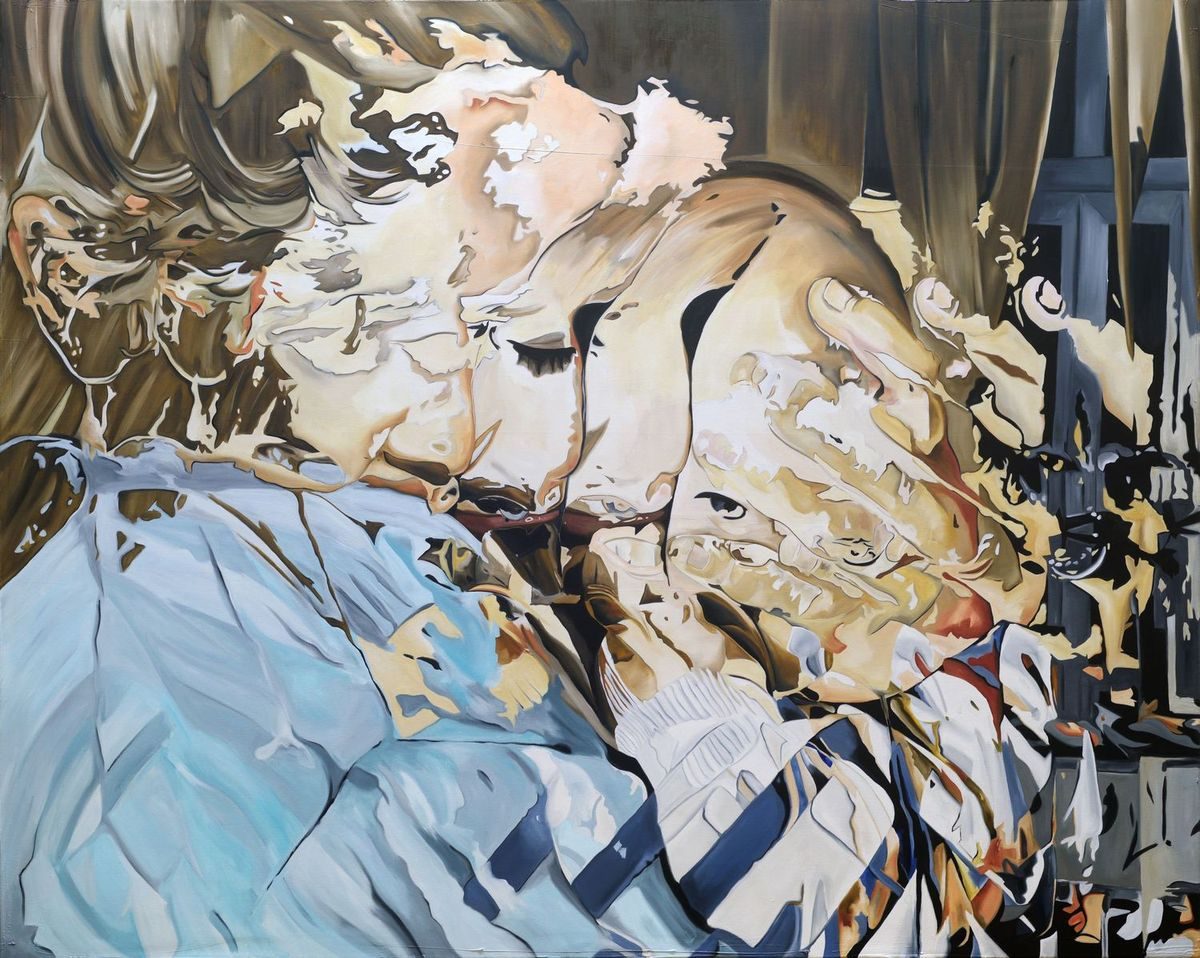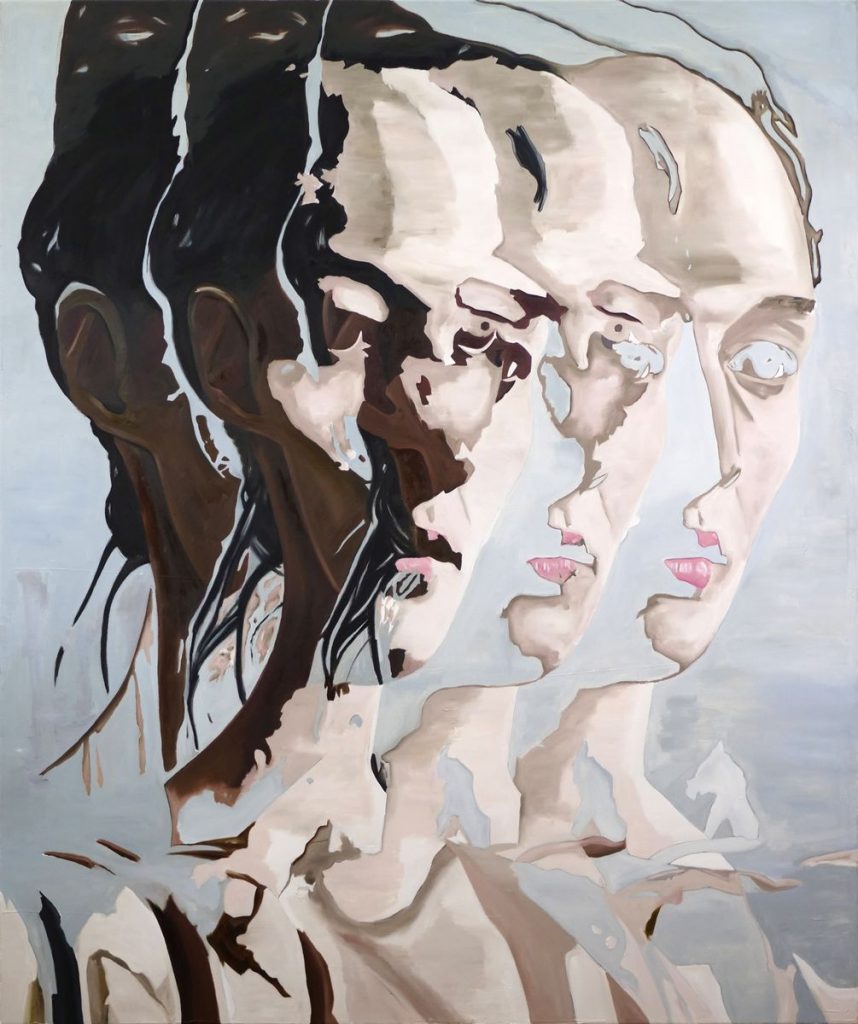
180 × 150 cm
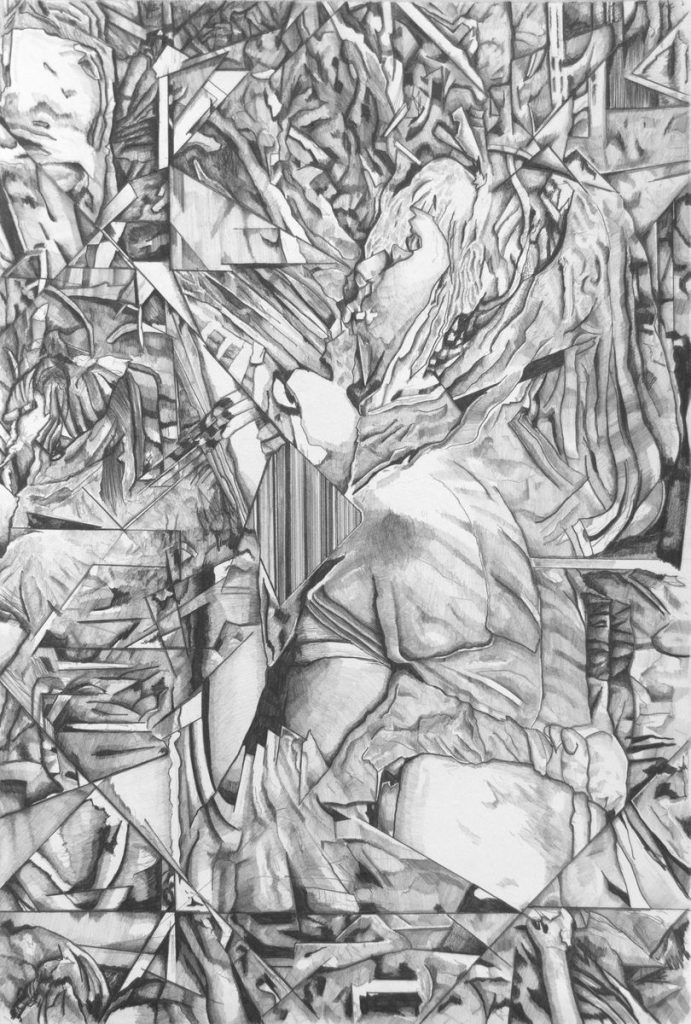
42 × 29 cm
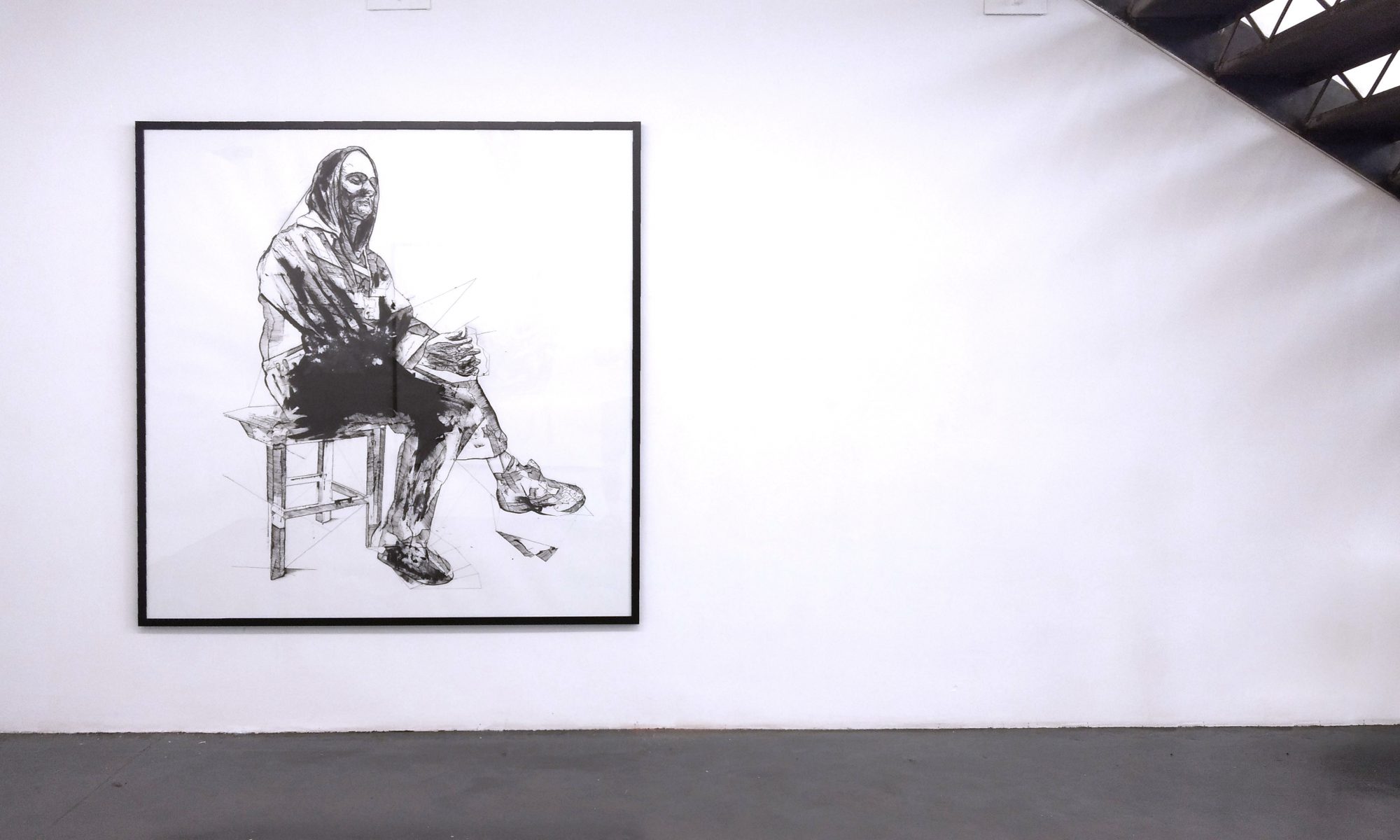
Exploring human conditions.
by Christian Bazant-Hegemark, April 2022
Since 2021 I’ve been creating works where I pursue visual irritations known from digital image processing, and transform them into paintings and drawings. The general technical origin of these glitches is as mundane as it is likable: opening or saving files sometimes leads to small, unintended mistakes. Where larger errors would lead to the complete unusability of a file, smaller discrepancies often still allow the digital data to be opened – but also lead to a misinterpretation of the content. Glitches can occur in any file format – whether image, text, or sound documents. They create an unexpected “aesthetic of the erroneous” that opens up an analog level of unpredictability within digital data.
Like all visual phenomena, glitches are of interest to artists; where impressionists went into nature to capture light and its effects at their source, the depiction of glitches could be understood as a contemporary implementation of a similar quest – as an interest in what constitutes the present visually and in terms of content: errors, data interpretation, the analog within the digital.
However, I use digital glitches merely as the starting point for my work; instead of developing them as eg. photographs, I translate them into paintings or drawings – adding individual attention and physical permanence, and thus a unique sort of reliability known from analog media. It might also make sense to compare these analog results to digital screens, whose technology refreshes the image many times each second (established frame rates are, for example, 30, 60 or 120Hz) – even for static image contents. An analog work, on the other hand, “is what it is,” its staticness is permanent in a fundamentally different way. How does this aspect influence the individual experience of viewing and feeling a piece?
The choice of the large format (in case of the paintings) further influences the image perception: how do visual and emotional resonances differ, now that glitches are experienced in an analog medium and space, without digital screens?


The physical perception of space and the reliability of static-permanent image content meet another aspect of my work: trauma recovery. This series of works continues two strands that can also be noticed in my previous work: the interest (1) in the manual depiction of digital phenomena (as eg. done in the ink series “Waiting“, or my manual pixelations), and (2) in the psychological focus on everyday life. This is particularly important for me in the context of overcoming trauma: where the depiction of traumatic events is established in art history, the focus of art rarely lies on the time after traumatic events.
This time of survival and recovery has no clear symbolism, perhaps also because it is mostly an introspective dynamic: people simply live. They learn a renewed focus on breathing and body exercises, gradually increasing their autonomy and body awareness skills. They live potentially dissociative and triggered. They are in search of diagnoses and therapies, often for decades. The portrayal of this everyday life, if not using stereotypes, will seem mostly banal — at least much more banal than the reality of the survivor’s inner states would convey: from the outside, actions like breathing, sitting, looking; walking, shopping, cuddling with the dog or swiping on the tablet seem rather unexciting. In the conception of the series of works, therefore, I wondered whether the use of visual glitches could possibly be used as a strategy for visualizing inner disruption.
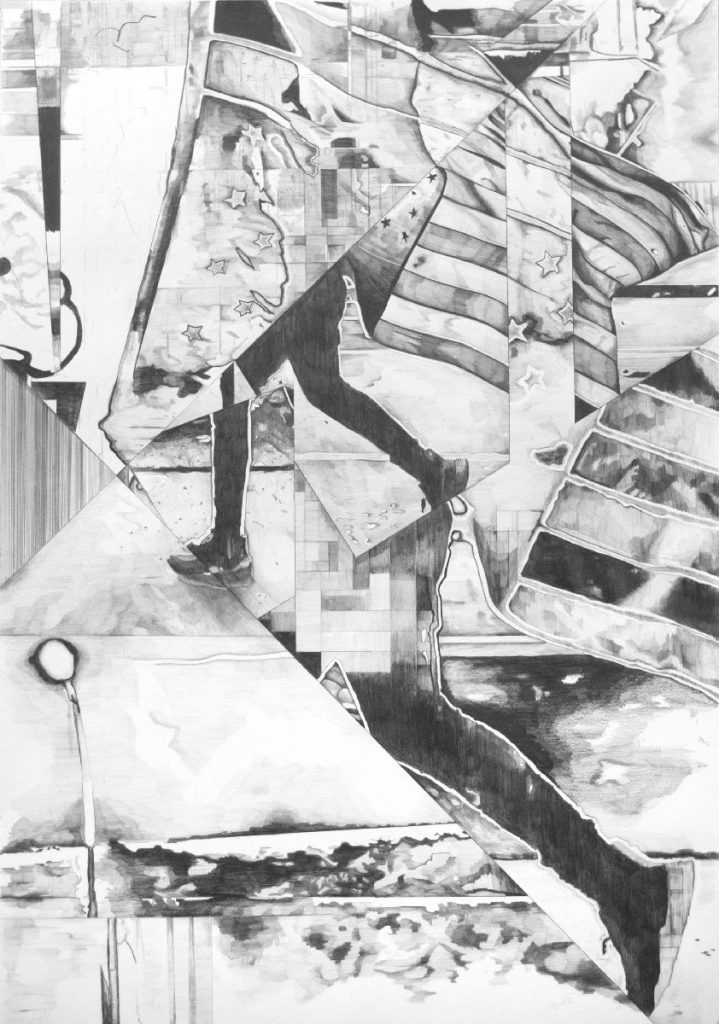

My work has primarily been photo-based for years; the source photos have been either captured by myself, or taken from public places (like news websites). It is transformed several times by the glitch software I have been developing since 2016, before the material is manually painted or drawn in the final medium. The original moments thus undergo a multitude of transformations and alienations: from reality to photo, from photo to glitch, from glitch to canvas or paper. The depicted moments stand in different traditions: Portrait (“Double Bind”, “Butterfly”, ..), genre (“Fractalophilia”, “Microscopia”, ..) or even history painting (for example in the “Black Lives Matter” drawings).
I also want to mention my frequent focus on depicting children, which art historically is a rather young topos. The children I depict are almost always from my immediate surroundings, but symbolically stand for constant transformation; this is especially true in the context of developmental traumas: these begin in childhood, usually have lifelong effects, and thus require constant transformation from the adult child.
